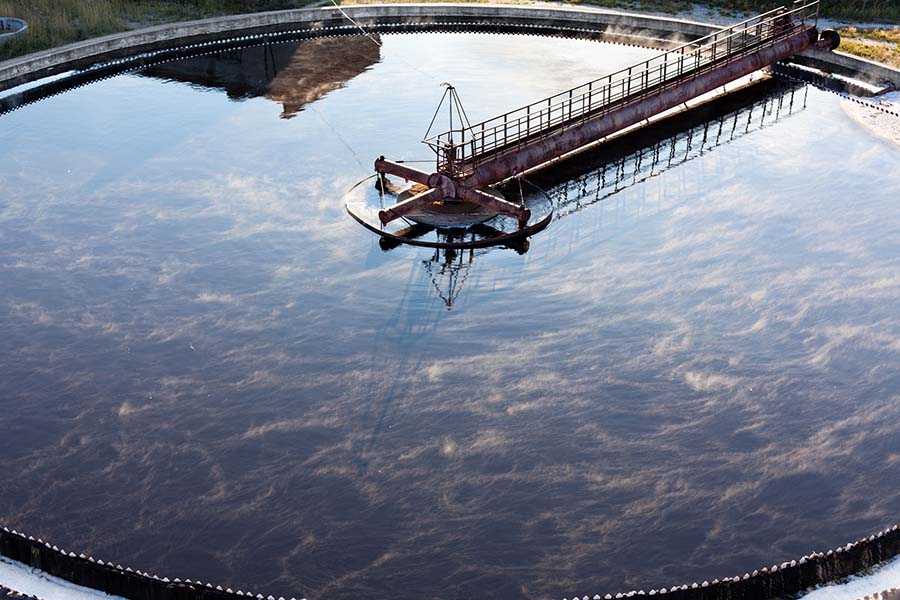A special climate means special challenges for development planners
In the south, developers and homeowners associations must keep the protean weather in mind when providing water treatment in master-planned communities. The systems they set up when establishing architecture, landscapes, and infrastructure need to be able to cope with hurricanes, flooding, humidity, saltwater, water scarcity, and degraded water quality.
Hurricanes
The Gulf Coast is prone to hurricanes, which can prolong construction time and weaken infrastructure. These consequences have in turn spurred changes in some states’ building codes, such as Florida’s, which now require that construction materials and techniques enable buildings to withstand hurricane-force winds. In that state, the mandates include impact-resistant glass or shutters, metal roofs or shingles, and structural reinforcements. In coastal areas, builders often elevate homes to counter flood risk.
Gulf coast builders and landscapers avoid planting trees too close to structures, and they tend to prefer native plants that can survive strong winds.
In resilient master-planned communities, proper drainage prevents flooding and water damage, and elevated electrical panels mitigate water exposure. When planning, developers also often consider evacuation routes and the proximity of emergency shelters.
The immediate impacts of hurricanes are damaging enough. But secondary impacts — like loss of essential utility services and loss of mobility — can be even more damaging.
A hurricane may blow out your windows. But that’s just today. Damage to wastewater treatment infrastructure can cause long-term sanitation and public health crises. Impassable roads cause all kinds of ongoing problems. Losing electricity can make it impossible to store perishable foods or stay cool indoors, increasing the risk of heat stroke among the most vulnerable.
When everything shuts down after a hurricane, you’ve got to do much more than flip a switch to bring it all back online.
But many master-planned communities do not establish connections to municipal drinking water and sewage grids, instead providing their own water and wastewater services, right on site: a decentralized approach that enhances resilience. In recent years, digital water technologies and modular treatment units have made it easier to build and operate miniature water utilities that serve a small area. After a hurricane, such modular systems often remain unscathed. Or if they do suffer some damage, they can often be restarted days, weeks, or months earlier than the infrastructures of large municipalities. Gulf Coast MPCs with decentralized systems can experience a critical boost in resilience to the nightmarish secondary impacts of hurricanes.
Other Water Problems
Coastal developments often have to cope with saltwater that, thanks to rising sea levels and depletion of groundwater, sometimes seeps into the freshwater aquifers that supply drinking water. Master-planned communities can build pipelines for drinking water and deploy reverse osmosis to efficiently desalinate brackish groundwater. But for some developers of the communities and some homeowner associations, such solutions may be too expensive.
In recent years, nutrient overloads and the associated toxic algal blooms have been in the news. The health risks of excessive nutrients in drinking water are now better understood. Although people fight over who is to blame, we can say that large farms, poorly maintained home septic systems, and nutrient contamination are among the threats to freshwater resources.
Water scarcity is another perennial problem in several southern states, thanks to causes as various as population growth, the hot climate, and geology. So ability to ensure a clean and reliable supply of water is among the desiderata that developers must keep in mind when seeking ideal locations for master-planned communities.
Because the coast’s wetlands are ecologically sensitive and protected, developers must comply with complicated regulations to achieve discharge compliance. They must also contend with swamps and sinkholes, the susceptibility to flooding of low and flat terrain, and the susceptibility to mold of building materials exposed to the region’s humid air. All these attributes of land and climate affect which sites are viable.
The dynamic weather conditions across the southern states present unique challenges for the design and development of master-planned communities. From the constant threat of hurricanes to the risks associated with saltwater intrusion, water scarcity, and nutrient contamination, planners must navigate a myriad of factors to ensure the resilience and sustainability of these communities.
The impacts of hurricanes extend beyond immediate structural damage, often leading to prolonged utility outages and mobility constraints, highlighting the importance of resilient infrastructure and decentralized water systems. By embracing modular treatment units and digital water technologies, master-planned communities can enhance their ability to withstand the disruptive aftermath of severe weather events.
Moreover, the management of water resources in the face of saltwater intrusion and nutrient contamination requires innovative solutions such as desalination and advanced filtration methods. While these solutions may come with their challenges and costs, they are crucial for safeguarding the health and well-being of community residents and preserving the environment.
Ultimately, successful master-planned communities in the Gulf Coast must balance the demands of development with the preservation of natural ecosystems and compliance with regulatory requirements. By addressing these complexities with foresight and ingenuity, developers can create vibrant, resilient communities that thrive in the face of adversity.
































